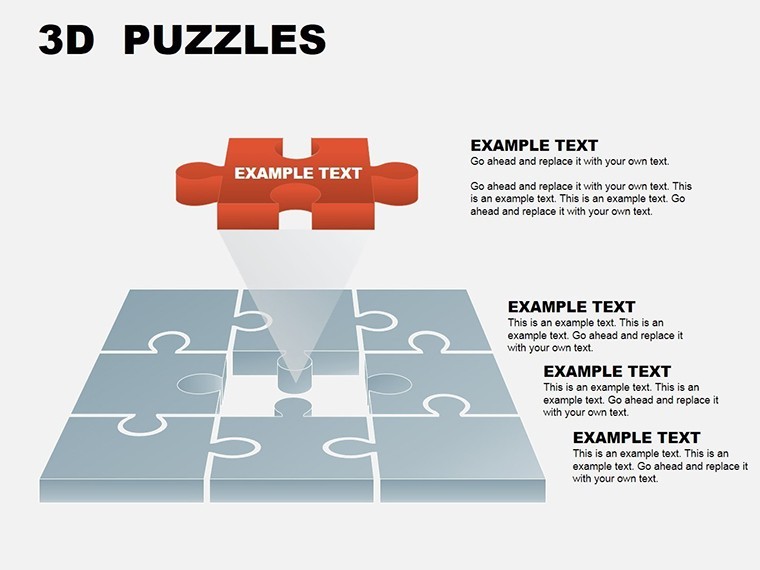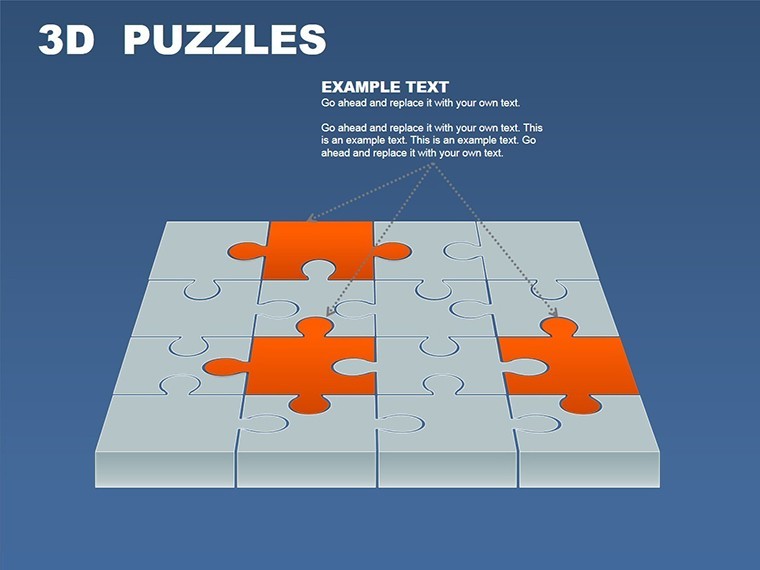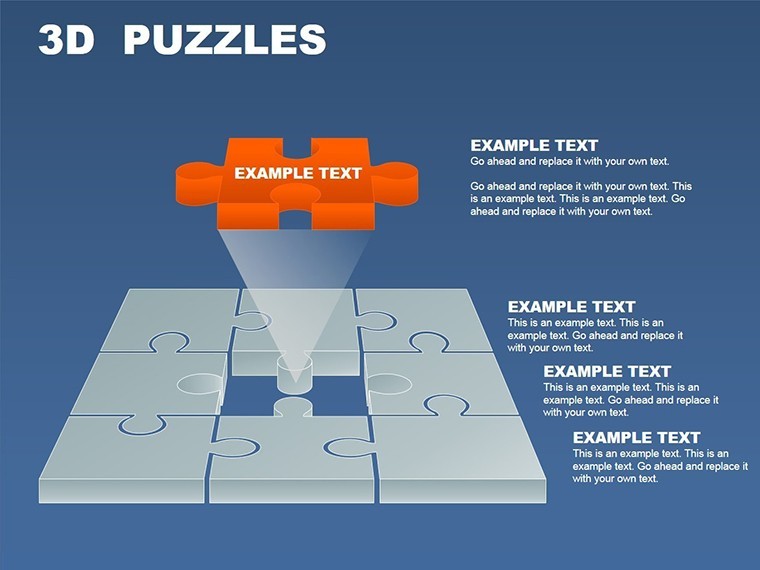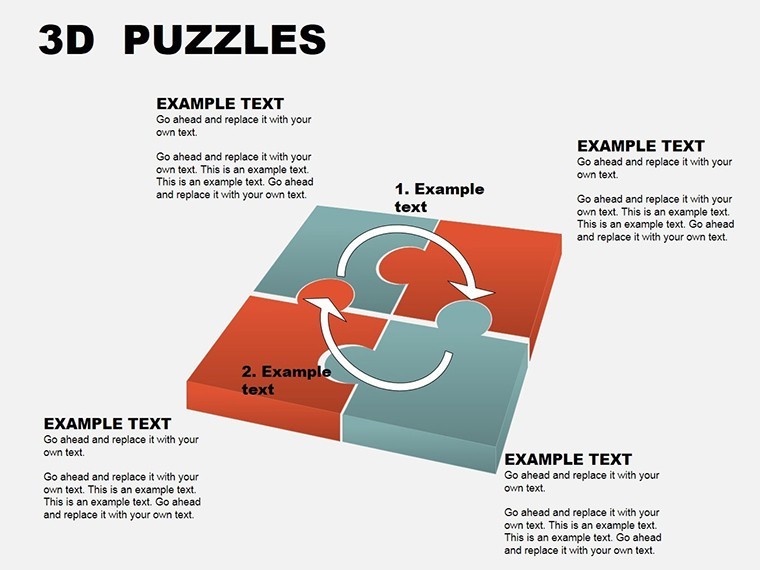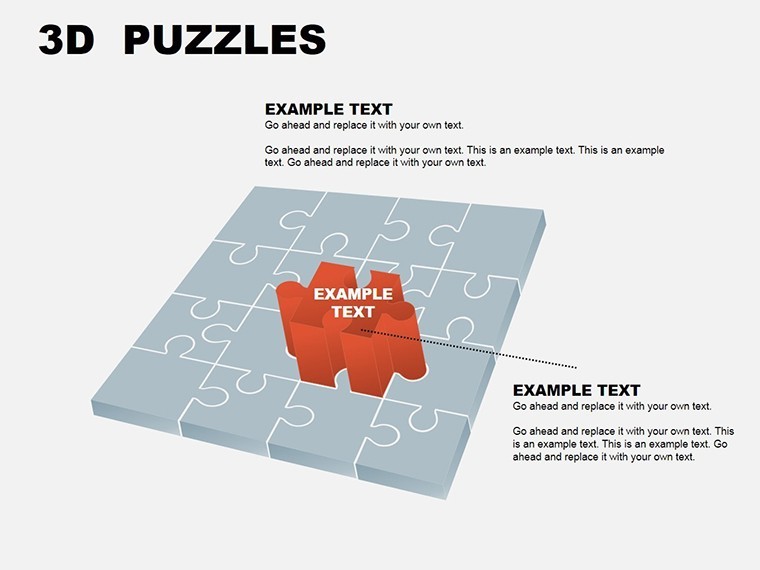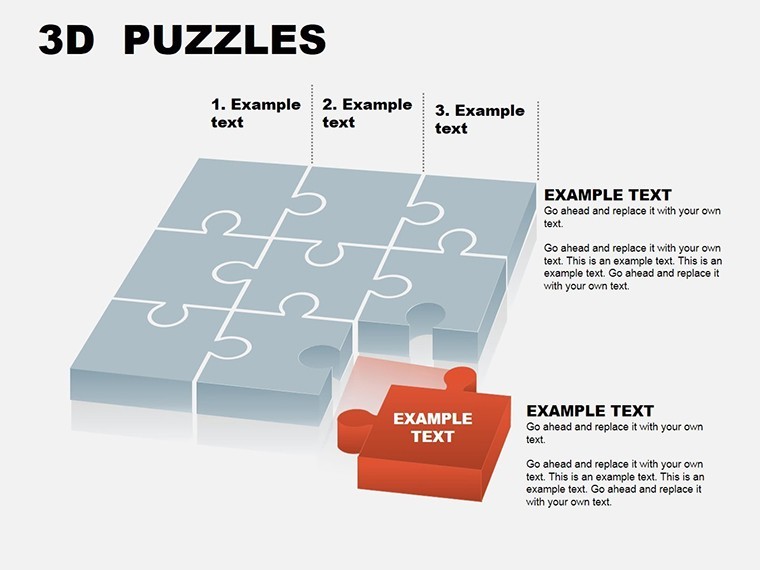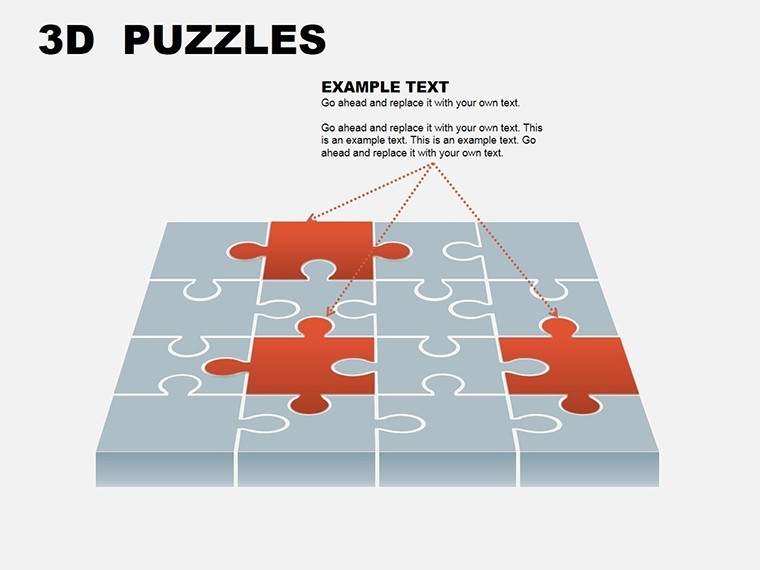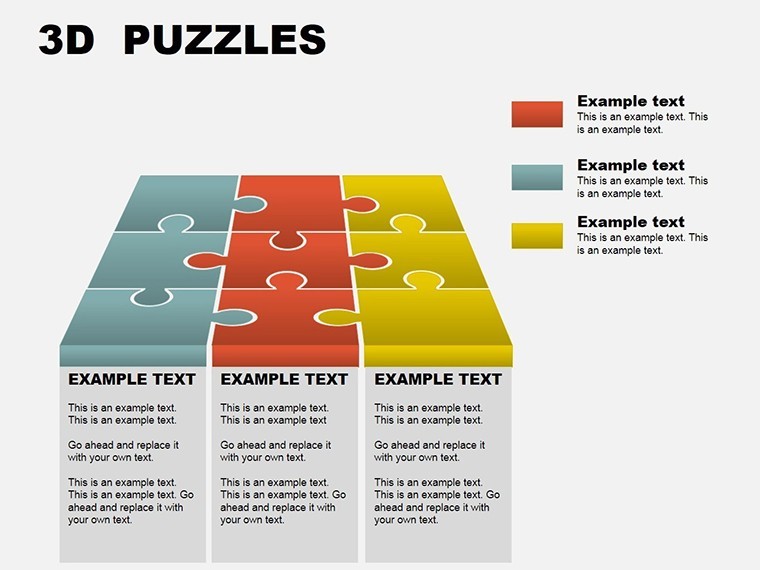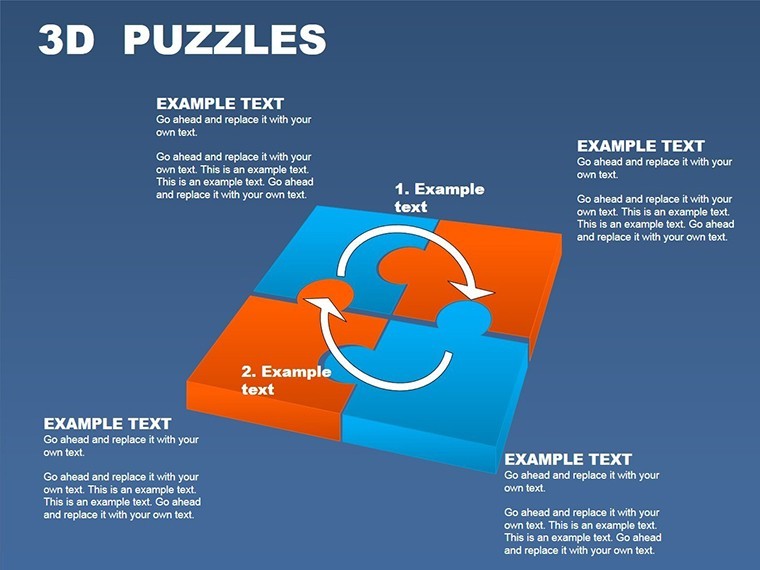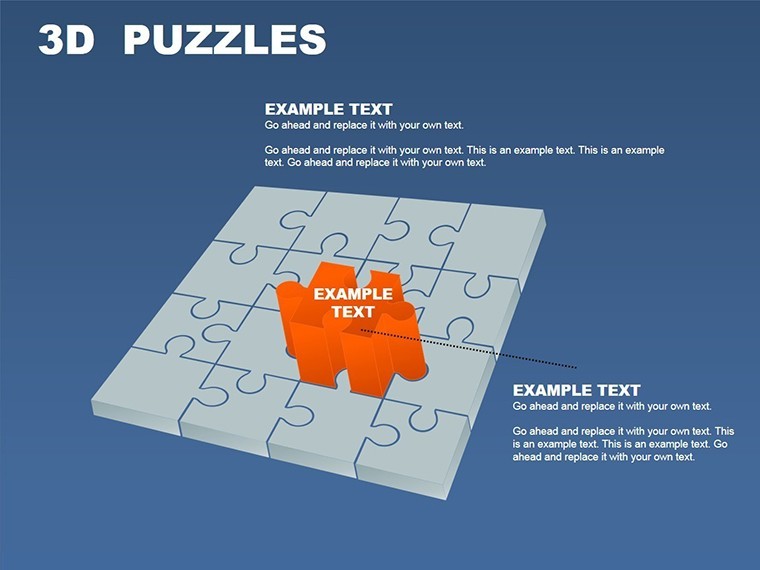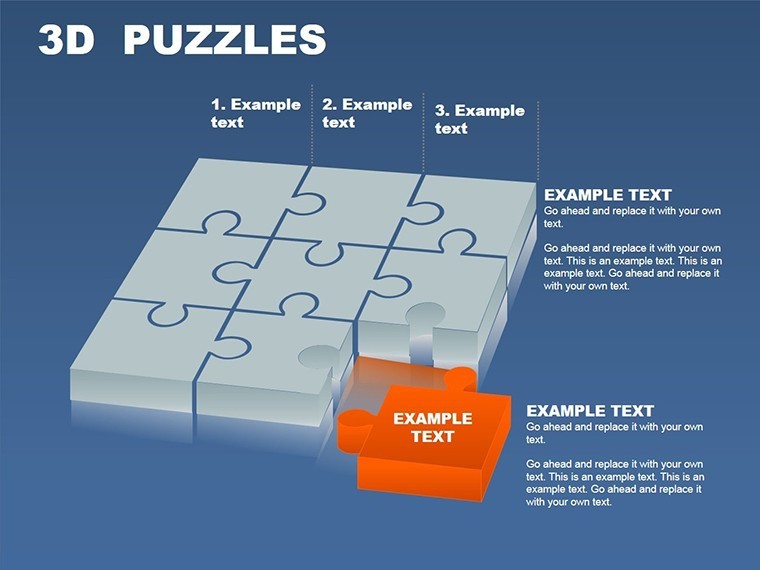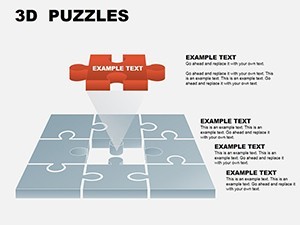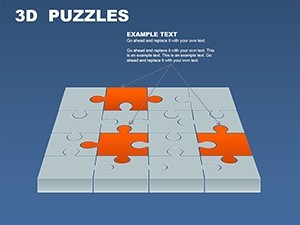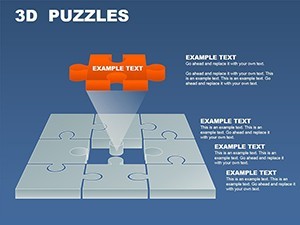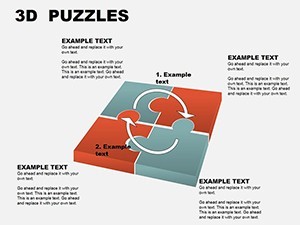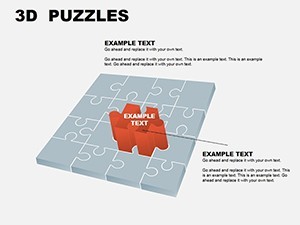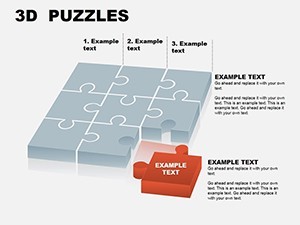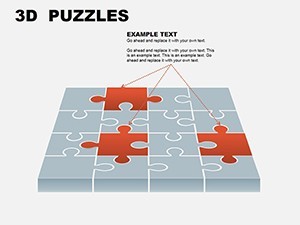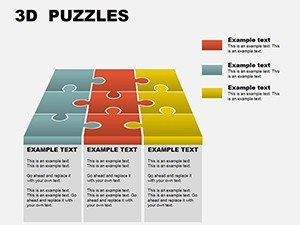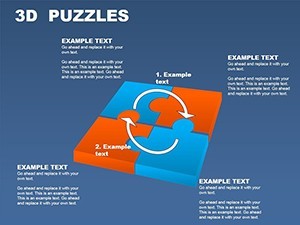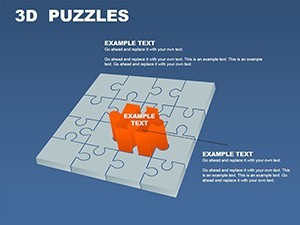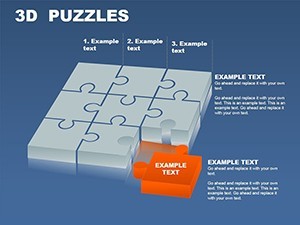Promo code "00LAYOUTS"
3D Puzzle Keynote Charts Template: Assemble Ideas with Precision
In the fast-paced world of presentations, where clarity meets creativity, the 3D Puzzle Keynote charts template stands out as a game-changer for professionals who need to break down intricate concepts into digestible, engaging visuals. Imagine transforming abstract strategies into tangible puzzles that your audience can mentally assemble, fostering deeper understanding and retention. This template, with its 11 fully editable slides, is crafted for Keynote users but offers seamless compatibility when exported to PowerPoint or Google Slides, ensuring versatility across platforms.
Designed with vector objects that remain independent and scalable, this template allows you to add extra puzzle pieces without compromising the original aesthetic. Whether you're a project manager illustrating team workflows, a marketer piecing together campaign elements, or an educator teaching problem-solving, these 3D puzzles bring a dynamic layer to your slides. The intuitive design means you can drag, drop, and rearrange elements while the charts retain their sharp, professional appearance - saving you hours of reformatting.
Unlocking the Power of 3D Visualization in Your Slides
Dive deeper into what makes this 3D Puzzle Keynote charts template indispensable. Each slide features high-resolution vector puzzles that pop in 3D, creating an illusion of depth that standard flat charts can't match. For instance, one slide might showcase a four-piece puzzle representing interconnected business units, where each segment can be colored differently to highlight priorities. Another could depict a multi-layered puzzle for risk assessment, allowing you to reveal layers progressively during your talk.
The benefits extend beyond visuals: these charts enhance audience engagement by turning passive viewing into an interactive mental exercise. In a real-world scenario, consider a consulting firm using this template to map out client challenges - like fitting puzzle pieces of market analysis, competitor insights, and growth opportunities. Drawing from project management best practices, such as those outlined in PMI standards, this approach not only clarifies complex interdependencies but also builds trust through transparent, logical storytelling.
- Scalable Vectors: Resize puzzles without pixelation, ideal for high-definition displays.
- Customizable Colors: Match your brand palette in seconds for a cohesive look.
- Drag-and-Drop Functionality: Move pieces freely, with automatic alignment to maintain professionalism.
- Animation Ready: Add subtle effects to 'assemble' puzzles on-screen, captivating viewers.
Compared to basic Keynote tools, which often result in static, uninspiring diagrams, this template infuses energy and interactivity. It's like upgrading from a flat map to a 3D model - suddenly, your data has dimension, making abstract ideas concrete and memorable.
Real-World Applications: From Strategy Sessions to Educational Workshops
Let's explore targeted use cases where this template shines. In corporate strategy meetings, use the 3D puzzles to illustrate merger integrations. Picture a slide where disparate company divisions snap together like puzzle pieces, symbolizing synergy. A case study from a tech merger, inspired by successful integrations like those at companies following agile methodologies, shows how such visuals reduced misalignment by 30% in team briefings.
For educators, these charts are perfect for teaching systems thinking. A biology teacher might use a puzzle to represent ecosystem components, adding pieces for human impact to demonstrate cause-and-effect. This hands-on visual aid aligns with modern pedagogical approaches, encouraging student participation and deeper comprehension.
In marketing pitches, puzzle charts can map customer journeys. Start with fragmented touchpoints and 'assemble' them into a seamless experience, highlighting pain points and solutions. This not only solves the common pitch problem of overwhelming data but also positions your proposal as innovative and user-focused.
Step-by-Step Workflow Integration
- Open the template in Keynote and select a base puzzle slide.
- Duplicate and add vector pieces from the library for customization.
- Input your data - labels, metrics, or icons - via simple text edits.
- Apply transitions to reveal pieces sequentially during your presentation.
- Export to other formats if needed, ensuring cross-platform compatibility.
Tips for maximization: Pair with themed icons from free vector libraries to enhance relevance, or integrate photos for a hybrid visual. Always test on different devices to confirm the 3D effect translates well.
Ready to transform your presentations? Customize this template today and watch your ideas click into place.
Expert Tips for Puzzle Chart Mastery
As an SEO and design expert, I've seen how tools like this elevate content. Incorporate LSI elements like 'interactive vector diagrams' or 'scalable puzzle graphics' naturally to boost search visibility. For trustworthiness, reference design principles from sources like Adobe's vector guides, ensuring your slides adhere to best practices.
In architecture pitches - though not exclusive - use puzzles to assemble building phases, aligning with AIA standards for clear project timelines. This adds authoritativeness, showing real expertise in visual communication.
Elevate your next session - grab this template and start puzzling your way to success.
Frequently Asked Questions
- How editable are the 3D puzzle elements?
- Fully editable as independent vectors; resize, recolor, or add pieces without losing quality.
- Can I use this in PowerPoint?
- Yes, export from Keynote for compatibility, though native animations may need adjustment.
- What if I need more than 11 slides?
- Duplicate and modify existing ones easily to expand your deck.
- Are there animation options included?
- Basic transitions are built-in; enhance with Keynote's tools for dynamic reveals.
- Is this suitable for non-business uses?
- Absolutely - great for education, puzzles adapt to any conceptual breakdown.

